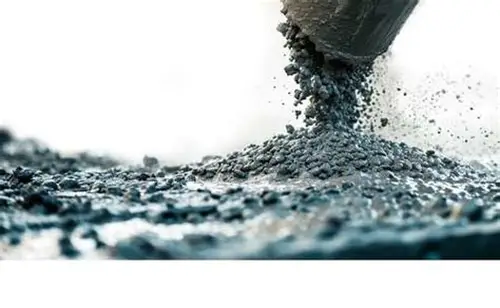Introduction
Concrete is essential to nearly every construction project today. Whether a massive skyscraper wall or an ordinary home, or commercial ground floor, concrete is everywhere.
Although concrete is known for its strength, it does have some weak points. When not cured properly or when it experiences shrinkage, concrete can experience cracking, and over time, it can even lose its strength. That’s where concrete admixtures come in.
Table of Contents
Concrete admixtures are essentially helpers that are incorporated into concrete to improve its performance. Whether you are looking to prevent cracking, enhance strength, or improve concrete performance in wet or cold conditions, an admixture can often enhance concrete performance.
In this blog, we will look at how the admixtures work, types of admixtures, and how they can enhance the strength, longevity, and cost-effectiveness of your walls and floors.
What is a Concrete Admixture?
A concrete admixture is simply a material, usually chemical or mineral, that is added to concrete before or during the mixing process. Admixtures are used to change the way that concrete behaves, in very specific ways, to meet the various requirements of your project.
Using admixtures is like using specialized tools. They aren’t always needed, but on those occasions when you do need them, they can make your concrete easier to place and finish.
Whether it be a setting time for concrete, increased workability, increased resistance to environmental impact, or minimizing cracking, admixtures are beneficial.
There are many types of concrete admixtures, each serving a specific function, which we will elaborate on below.
What Are The Uses Of Concrete Admixtures?
Consider an admixture as your concrete’s performance enhancer. Here are the two main perks:
1. Crack Resistance
Concrete cracks due to many reasons, such as drying shrinkage, temperature changes, or even poor curing practices. Certain admixtures, for example, plasticizers and superplasticizers, can help with this by increasing the workability of the mix.
Therefore, the concrete should flow more easily and with little effort, making it easier to avoid placing excess water at work, stress points, or weak points, all of which can promote cracking.
2. Increased Durability
There are a number of admixtures that densify concrete and will enhance the compactability. This will limit the amount of water, chemicals, and any other adverse substances from entering the concrete.
An example includes water reducers and accelerator admixtures, which not only improve concrete strength and workability, but they have also proven to resist wear and corrosion damage as well as damage caused by weather.
3. Cost Effectiveness for Users
Although many of these admixtures may seem to incur an extra cost initially, there is the potential to save users money in the long run.
By increasing the workability of the mix and eliminating water content, construction crews and their partners can cut down on time during placement, which speeds the process up, and there is cost savings from using water and/or waste.
Moreover, cheaper labor and less downtime are something we all appreciate (and more importantly, our clients!).

4. Adaptability to Extreme Conditions
If it is freezing or scorching outside, concrete has no choice but to respond to its environment. Super and specialized admixtures allow the concrete to cure correctly, and in conditions that could cause thermal cracking or delayed setting time intervals. They are great for outdoor construction.
5. Sustainable Building
So many admixtures are being produced with sustainability features. Some are compatible with recycled materials, such as fly ash or slag, which can therefore reduce the impact of cement materials on the environment. This can be a great alternative to adopting green building products.
How do Admixtures Mitigate Cracking?
Cracking is one of the most frequently experienced (and most disappointing) characteristics of concrete. Cracks (and more particularly, deep cracks) can impede the appearance and weaken a structure.
Fortunately for us, different mixes of admixtures will help mitigate concrete’s proclivity to crack, in more than one direct way:
Plasticizers or Superplasticizers – Superplasticizers are able to reduce the amount of water in the concrete mix, which means it can be more malleable, without compromising strength.
The more workable the concrete, the better the flow will be through the form or area of placement, with less opportunity for air pockets and weak spots, therefore meaning less cracking in the future.

Water Reducers – these reduce water-to-cement ratios (the authoritative ingredients in concrete) and over the quantity of water in a concrete mix can lead to a superior density and strength performance of concrete, thereby limiting shrinkage and
Accelerators: Accelerators are ideal for cold environments, these enjoy a reputation for increasing the speed at which concrete sets, which is important where low temperatures can delay the initial set, and lead to concrete weaknesses if this occurs.
Retarders: On the other hand, if you are in hot climates, retarders can provide extra time to place and finish the concrete, or slow the setting time, which will help reduce surface cracks.
Each of those admixtures plays a central role in creating an ideal concrete structure with stability and resistance to cracking.
Conclusion: A Smarter Way to Build with Concrete Admixtures
When constructing walls and floors with the intent of permanence, concrete alone may not always suffice. Sure, its abundant availability, strength, and versatility make it a go-to material, but it isn’t without its flaws.
Cracks, shrinkage, deterioration, and even inadequate curing can weaken your concrete system. Fortunately, that is why concrete admixtures are available, not as luxurious afterthoughts, but as applicable solutions in response to real construction issues.
Admixtures are performance enhancers for concrete. They serve as a concrete-enhancing learn; they instantly provide directly valued items like improved workability, more speedy or slower set time, depending on the materials present, improved durability, and most importantly, increased crack resistance.
Whether building a home in a humid region or establishing industrial flooring made to support heavy loads, proper admixture additions can aid in the process and product.
The biggest benefit of admixtures lies in the versatility that they provide. Plasticizers and superplasticizers can help improve the flow of concrete.
There are even admixtures, such as accelerators and retarders, that can help deal with temperature issues as they relate to the use of concrete. Each type of concrete job allows for customized use of an admixture, which is pretty cool.
Many admixtures also promote sustainable delivery of concrete, with options that allow for recycled materials like fly ash. This type of shipping reduces your environmental footprint and improves performance.
Cost-effective? Yes. It might seem like admixture is an expense at first, but in the long run, it saves you labor hours, provides the ability to have quicker turnarounds, and avoids spending money on repairs and maintenance.
Admixtures are also a wise investment as it provide long-term durability and performance and offer peace of mind.
Sagar Telrandhe is a Construction Engineer with a B.Tech in Construction Engineering & Management. Passionate about infrastructure development, project planning, and sustainable construction, he specializes in modern construction techniques, project execution, and quality management, contributing to efficient and innovative building.


